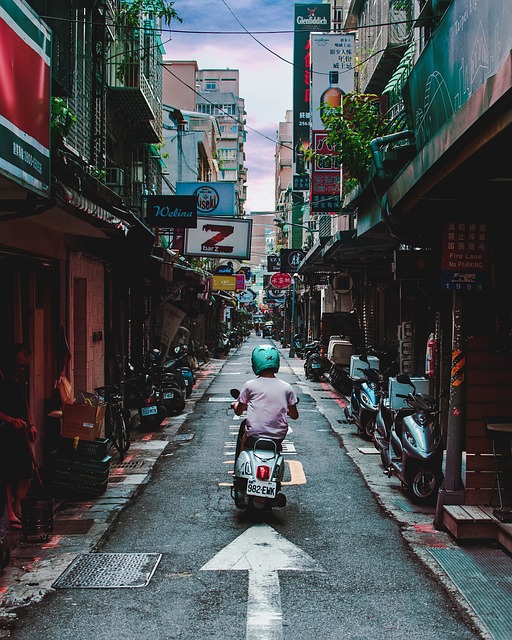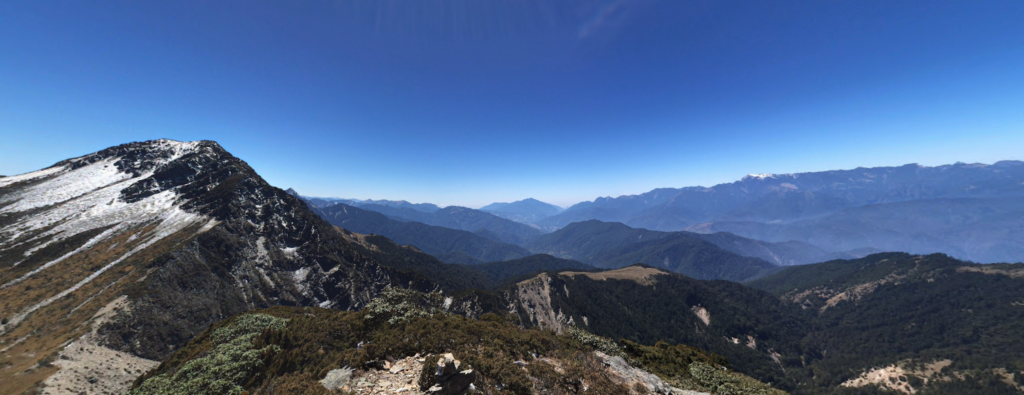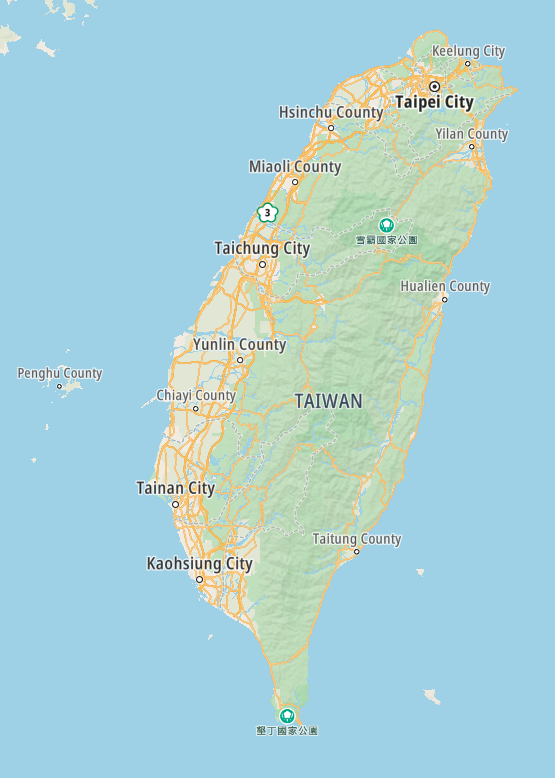Taiwan / 中華民國 / Zhōnghuá Mínguó – Let’s explore here
What’s it like in Taiwan?
Taiwan is an island country in east Asia, very close to, and claimed by, China. Two thirds of the country is dominated by mountains, with a plain covering the other third, making it one of the most densely populated places on the planet. The highest point is Yu Shan, at 12,967 ft (3,952 m) above sea level.
It has a very long, rich and troubled history. However Taiwan is now one of the most technologically advanced makers of microchips and electronics in the world.
The population of Taiwan is around 24 million people (2022), with about two in five living in the capital, Taipei. The population peaked in 2019 and has been declining ever since.

A bit about the history of Taiwan
Early History and Colonization
Taiwan was originally inhabited by indigenous peoples for thousands of years. In the 17th century, the island became a point of interest for European powers. The Dutch East India Company established a colony in southern Taiwan in 1624, and the Spanish briefly controlled the north. In 1662, Chinese Ming loyalists, led by Koxinga, expelled the Dutch and established a base on the island.
Qing Dynasty and Japanese Rule
Taiwan became part of the Qing Dynasty in 1683, and large numbers of Chinese settlers arrived. In 1895, Taiwan was ceded to Japan after the First Sino–Japanese War, where it was under Japanese rule until 1945. During this time, Taiwan underwent modernisation but also experienced cultural suppression.
Post-WWII and Chinese Civil War
After Japan’s defeat in World War II, Taiwan was placed under the control of the Republic of China (ROC), which had retreated to the island after losing the Chinese Civil War to the communist forces. In 1949, the ROC government, led by the Kuomintang (KMT), fled to Taiwan, where it maintained control while the People’s Republic of China (PRC) was established on the mainland by the Communist Party.
Cold War and Democratic Transition
During the Cold War, Taiwan remained a key ally of the United States and other Western nations, which recognised it as the legitimate government of China. In 1971, the United Nations recognised the PRC as the representative of China, and most countries, including the US, shifted their recognition to the PRC. However, Taiwan continued to operate as a separate political entity, with its own government, military, and economy.
Cross-Strait Relations and Economic Growth
Taiwan’s political status remains contentious, with China insisting on reunification. Meanwhile, Taiwan’s economy grew rapidly, becoming one of the four ‘Asian Tiger’ economies, along with Hong Kong, Singapore, and South Korea, and is particularly known for its advanced technology sector.
Present Day
Taiwan operates as a democratic and highly developed economy, but its political status remains a sensitive issue. Tensions with China persist, with the PRC continuing to claim Taiwan as part of its territory, while Taiwan maintains its de facto independence.


Taiwan road trip
Map of Taiwan

We haven’t finished our planning for our road trip through Taiwan yet. When we do though, we’ll post it here, and in the blog.
Hopefully our journey will improve our knowledge of this intriguing and beautiful country, and enable us to meet some interesting people. We’ll be updating this page at that time – don’t forget to check back 🙂
What’s it like to drive in Taiwan?
They drive on the right hand side of the road in Taiwan. In the main, roads are quite good, however some are unsurfaced dirt tracks. Driving standards are also quite good.
Do you require an international driving permit in Taiwan?
We’ve created a dedicated page to driving abroad, which answers this question, and more, which you might find helpful.
Can you use your UK driving license when driving through Taiwan?
We’ve created a dedicated page to driving abroad, which answers this question, and more, which you might find helpful.
Do I need a carnet de passages to drive in Taiwan?
We’ve created a dedicated page to driving abroad, which answers this question, and more, which you might find helpful.
What currency do they use in Taiwan?
In Taiwan they use the New Taiwan Dollar. Cash is widely used. The use of credit / debit cards is also widely accepted. Travellers cheques are not readily accepted. There are many ATMs in cities and towns throughout the country.
You should make yourself aware of the amount that your bank charges you for using credit and debit cards abroad. Often credit cards are cheaper for purchasing items directly, and for withdrawing cash from ATMs.
What language do they speak in Taiwan?
They speak Standard Mandarin and Taiwanese Mandarin (Hokkien) in Taiwan. English is also widely spoken by younger generations.
What time zone is Taiwan in?
Remember, when you’re planning your next trip to take a look at what time zone it’s in.
Do I need a visa to visit Taiwan?
We’ve created a dedicated, more comprehensive page on visas, which you should find helpful. Check it out!
Is wild camping legal in Taiwan?
Yes, wild camping is fine in Taiwan.
What plug / socket type do they use in Taiwan?
In Afghanistan they use plug / socket types A and B.


Health issues in Taiwan
Is it safe to drink water in Taiwan?
Yes, it is safe to drink tap water in Taiwan. Bottled water is also readily available throughout the country.
What vaccinations are required for Taiwan?
This NHS website is kept up to date with all relevant information on vaccinations in Taiwan.
Phones in Taiwan
What is the country calling code for Taiwan?
The country calling code for Taiwan is +886
What are the emergency phone numbers in Taiwan?
- The emergency number for police in Taiwan is: 110
- In Taiwan, the emergency number for ambulance is: 110
- The emergency number for fire in Taiwan is: 119
If you’ve got some useful info that you’d like to share, let us know!
And don’t forget to check out all the other pictures!
